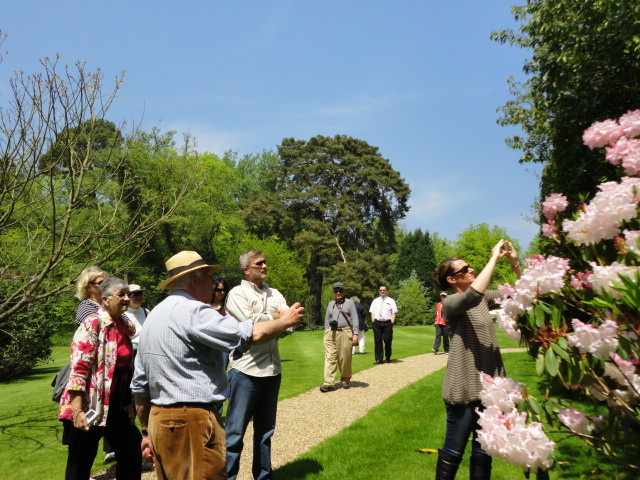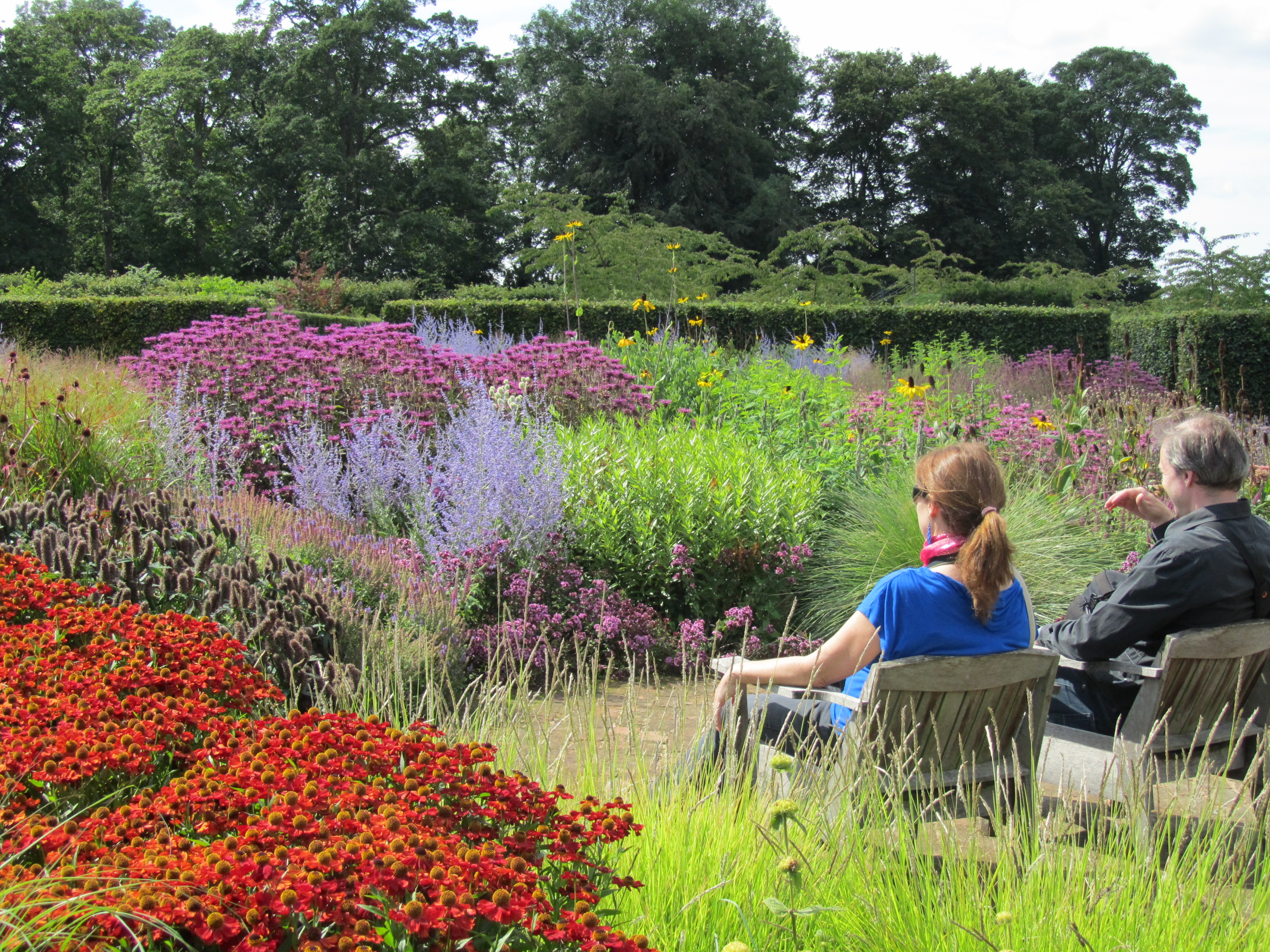Read here about the key British Garden Organisations – their history, influence and purpose.
Physic, Botanic and Botanical Gardens
Click to find out more about Physic, Botanic and Botanical Gardens
The second Physic Garden established in Britain was at Edinburgh University in 1670, by Dr Robert Sibbald, their first Professor of Medicine. This was the forerunner of the present Royal Botanic Gardens in Edinburgh. This was followed in 1673 by the foundation of the Chelsea Physic Garden, by the Society of Apothecaries. All these gardens are used for education and research to this day.
While Physic Gardens were set up for medicinal purposes, the Botanic Gardens emerged as much wider collections of plants brought back to Britain by explorers during the eighteenth and nineteenth centuries. The Royal Botanic Garden at Kew is world renowned for research, its vast collection of plants and for such events of world importance as the introduction of rubber trees to Malaysia from South America. Several British universities own botanic gardens for teaching and research purposes. These are usually also open to the public.
Horticultural Societies and Garden Clubs
Click to find out more about Horticultural Societies and Garden Clubs
The Royal Horticultural Society, the UK’s leading gardening charity, runs four gardens: Hyde Hall in Essex; Harlow Carr in North Yorkshire; Rosemoor in Devon; Wisley in Surrey. Each contains a wealth of plants and features, including small and model gardens, National Plant Collections and plant trials leading to the Society’s Award of Garden Merit (AGM). The large Glasshouse at Wisley is a major attraction. The gardens are also centres for training for home gardeners and run a wide range of courses, lectures and other activities. Established in 1804, the Society is principally funded by its many members, garden visitors and commercial horticultural growers.
The National Trust for Places of Historic Interest or Natural Beauty is one of Europe’s leading conservation charities. It was founded over one hundred years ago by three people of vision who foresaw the increasing threat to open countryside and historic places. They were Miss Octavia Hill, a social worker, Sir Robert Hunter, a solicitor, and Canon Hardwicke Rawnsley, a parson, who formed the trust in 1895 to acquire and preserve beautiful and historic places “for the benefit of the nation”.
In 1907 the Trust was incorporated by an Act of Parliament which contained a unique provision enabling it to declare its property ‘inalienable’, which means it cannot be sold, mortgaged or compulsorily purchased without the express will of Parliament.
Since 1894 the Trust’s growth has far exceeded what the founders could have imagined. It now owns and manages well over half a million acres of countryside, more than 500 miles of coastline, over 200 historic houses and 160 gardens.
The Trust is administered from a head office in London and 16 regional offices, covering England, Wales and Northern Ireland. It is supported as a charity completely independent of government by 2.3 million members and 30,000 volunteers, as well as by donations, gifts and legacies.
Over 8 million people visit National Trust parks and gardens each year.
The National Trust for Scotland was brought into being in 1931 by a few prominent Scots concerned at the destruction of much of the country’s heritage of landscape and architecture. Its task, set forth in various private Acts of Parliament, is to promote the care of fine buildings, historic places and beautiful countryside. Now, it is an influential body, with more than 100 properties in its care covering over 100,000 acres. They include castles, gardens, historic sites, islands, countryside, little houses, coastline, waterfalls and the birthplaces of several famous Scots.
The Trust is administered from its head office in Edinburgh and 5 regional offices.
The National Gardens Scheme Charitable Trust
Over 3000 gardens in Britain open to the public in support of charities during the summer. The scheme was started in 1927 at the suggestion of Miss Elsie Wagg, a member of the Council of the Queen’s Nursing Institute, as part of a national memorial to Queen Alexandra whose deep and sympathetic interest in district nursing was well known.
Scotland’s Garden Scheme was set up to raise funds for The Queen’s Nursing Institute (Scotland) in the same way as the National Gardens Scheme. There are over 300 gardens in the Scottish Scheme.
National Plant Collections
Click to find out more about National Plant Collections
The NCCPG has a membership of around 8,500 amateurs and professionals, organised into 41 County based groups under the leadership of a Council comprising distinguished scientists, horticulturists, and amateur gardeners. There are currently 650 National Collections in the British Isles, involving some 320 genera and 50,000 plants.
The main functions of the National Collections are:
- To conserve stocks of threatened garden plants from extinction.
- To make it possible for enthusiastic gardeners to obtain a wider range of plants.
- To stimulate scientific, taxonomic, horticultural, historical and artistic studies of garden plants.
National Collections vary in size depending on the maturity of the Collection and the size of the genus. Some Collections are very large, for example 2,500 Narcissus and 1,800 Dahlias, whilst others are small, 6 Malmaison Carnations and 30 Photinia. We come across some of the Collections on our tours.

 Passionate about beautiful gardens? Experience the finest gardens on one of our small and friendly group tours.
Passionate about beautiful gardens? Experience the finest gardens on one of our small and friendly group tours.
 Ready to book?
Ready to book? 
